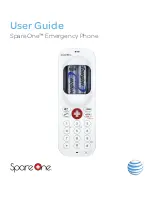
45
Status: To display register result.
Display Label: Which is displayed on the phone’s LCD
screen.
Display Name: Which is sent to the other call party for
displaying.
Register Name: Allocated by SIP server provider, used for
authentication.
User Name: Allocated by your SIP server provide, used
for authentication.
Password: Used for authorization.
SIP Server 1
To display and configure Primary SIP server settings.
Server IP: SIP server address, it could be an URL or IP
address.
Registration Period: The registration will expire after
Registration period, the IP phone will re-register
automatically within registration period.
SIP Server 2
To display and configure Secondary SIP server settings.
This is for redundancy, if registering to Primary SIP server
fails, the IP phone will go to Secondary SIP server for
registering.
Note: Secondary SIP server is used for redundancy, it can be
left blank if there is not redundancy SIP server in user’s
environment.
Outbound Proxy Server
To display and configure Outbound Proxy server settings.
An outbound proxy server is used to receive all initiating
request messages and route them to the designated SIP
server.
Note: If configured, all SIP request messages from the IP
phone will be sent to the outbound proxy server forcefully.
Transport Type
To display and configure Transport type for SIP message
UDP: UDP is an unreliable but very efficient transport
layer protocol.
TCP: Reliable but less-efficient transport layer protocol.
TLS: Secured and Reliable transport layer protocol.
DNS-SRV: A DNS RR for specifying the location of
services.
NAT
To display and configure NAT(Net Address Translator)
settings.
STUN: Short for Simple Traversal of UDP over NATS, a
solution to solve NAT issues.
Note: By default, NAT is disabled.















































